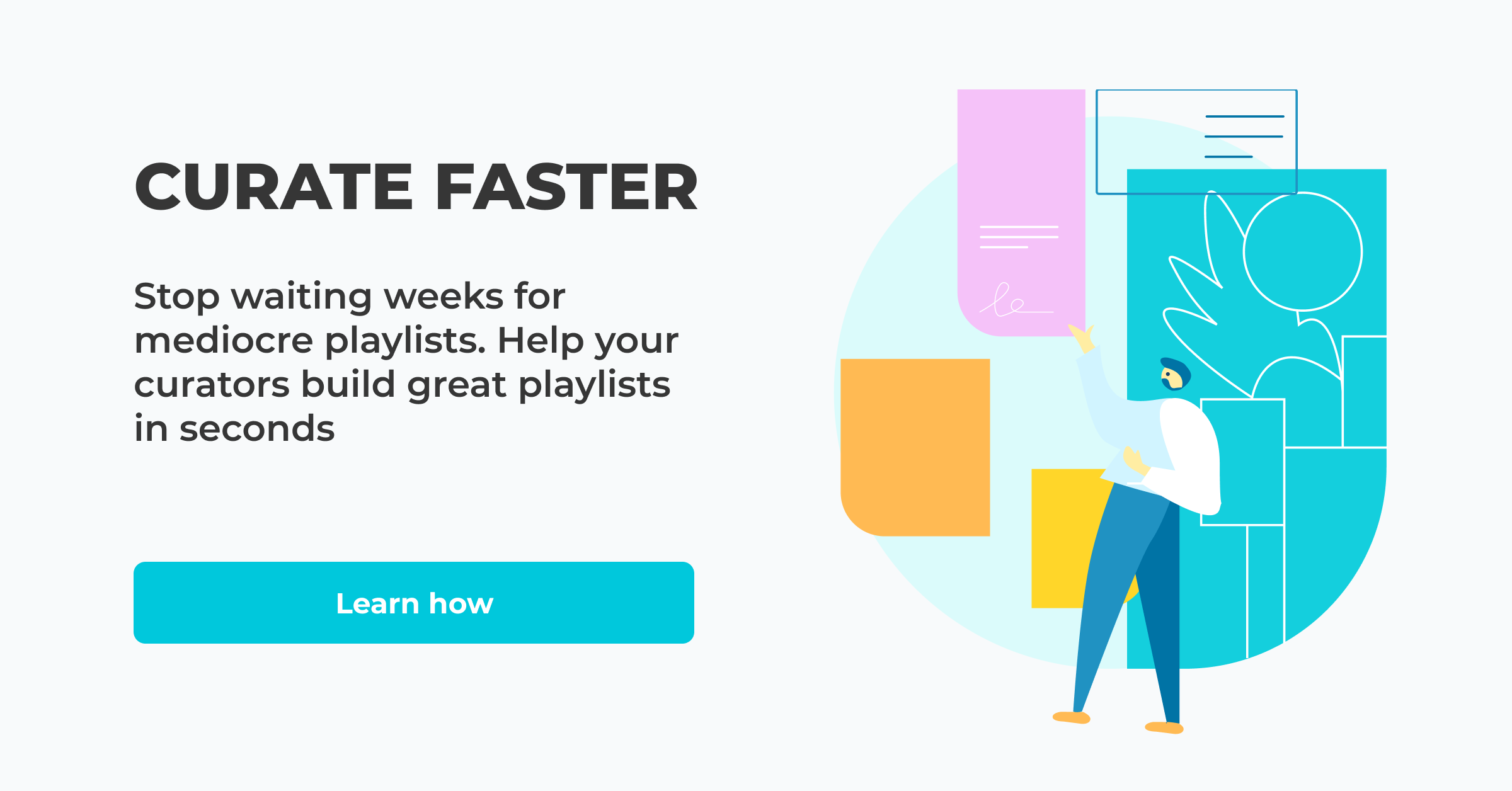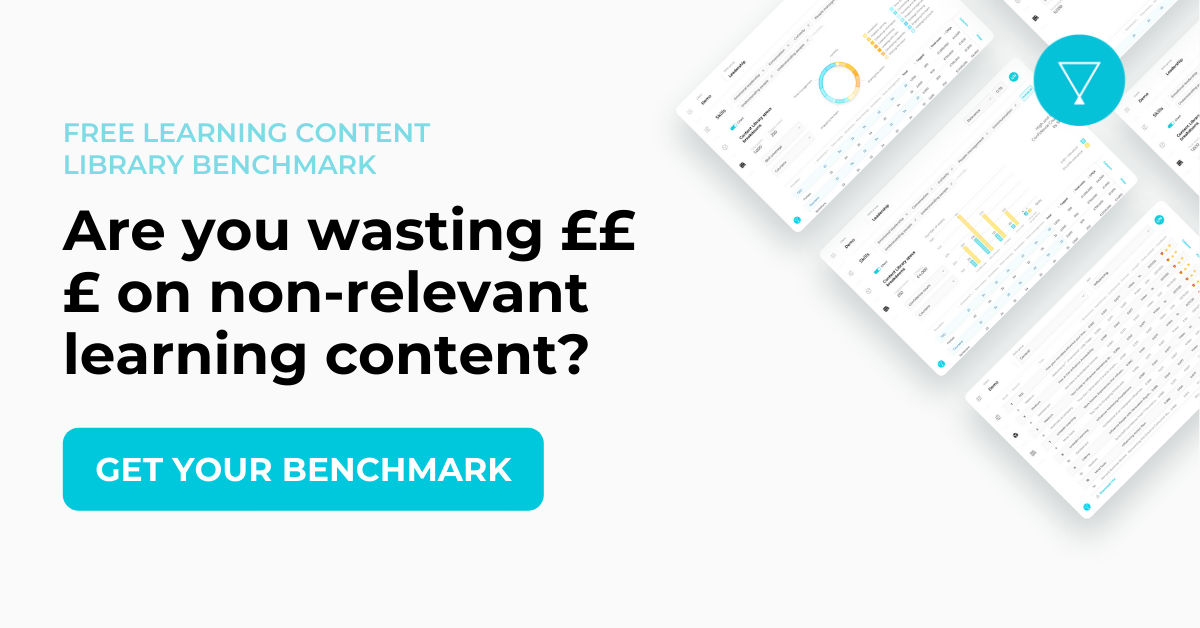Unless you are Bill Gates, Elon Musk, Jeff Bezos, or a member of the Walton family, money (and budgets) are finite.
And, thanks to the global pandemic and its devastating impact on economic conditions around the world, budgets everywhere are getting slashed.
Learning & Development (L&D) departments are no exception.
Yet slashing funding for L&D is a colossal mistake. More than ever, budgets should be reallocated and reconsidered towards intentional learning and upskilling of staff.
93% of businesses view reskilling and upskilling as the #1 priority for 2021.
So instead of cutting the budget for L&D, we propose the following 5 ways to reprioritise and optimise your learning content spend:
- Use multiple data sources to agree on the most important skills in your organisation
- Fix metadata errors and filling metadata gaps using human-guided algorithms
- Identify unnecessary or sub-optimal content spend
- Curate content to support skills
- Improve discoverability and experience for end-users
Over the next few minutes, we’ll dip into each of these 5 pro tips and get you set up for a successful conversation as you begin (or continue) your Learning Experience Platform (LXP) vendor search.
Pro Tip #1: Use multiple data sources to agree on the most important skills in your organisation
Before you invest another penny in L&D, you must must MUST have an honest, in-depth conversation about the most essential skills necessary to up-level your team and, by natural extension, your entire organisation.
Spending money on learning and development without a proper focus on what skills you aim to enhance is lighting money on fire. It may be fun to watch in the moment but doesn’t have the intended long-term impact.
At Filtered, skills is our jam. We work with (and think about) skills all day, every day. We know what that reality looks like.
Unfortunately, the reality is messy.
Skills are ill-defined, poorly grouped, and numerous – with many organisations reporting hundreds thousands of skills across various skills frameworks, taxonomies, and matrices.
There is little to no hope of cleaning up our content (a massive focus of LXPs) if skills are out of alignment.
We wrote a very detailed article on the Skills Landscape if you want to dig into the ins and outs. One key takeaway is the need to use multiple data sources to agree on the most important skills in your organisation.
We also recommend reimagining data collection (see #1 here). Most companies only track the basic learning content metrics – time spent, completion rates, and ratings. To be clear, you should 100% be collecting these data, but they don’t paint the complete picture.
Instead, think of your audience as customers (not just employees). Monitor more next-level data such as deeper behaviour and usage, user feedback, and NPS.
Pro Tip #2: Fix metadata errors and filling metadata gaps using human-guided algorithms
AI is no longer the future. It’s the here and the now, with 66% of organisations increasing or maintaining their AI spend despite the pandemic...
It’s imperative learning content solutions cut through the noise – finding, then fixing and filling metadata gaps. And algorithms can help.
We reduce the noise by using human-guided algorithms, essentially matching specific, individualised development needs to each learner within an organisation with learning content recommendations that best meet those needs.
We’ve been doing so for years, since our CEO Marc first competed against our AI - and lost, as covered by Scientific American. And our tech has only gotten better.
Filtered’s curation technology (Content Intelligence) product sifts out the junk and delivers tagged, clean content libraries – relevant to your business goals and valuable for your team.
We accomplish this by:
- Reviewing and evaluating existing content vendors
- Processing all internally-created, original materials
- Filling the gaps (and yes, there are always gaps) with free articles, videos, podcasts, social shares, community-driven content, and other relevant content sources and types.
This last piece (filling the gaps) is an often overlooked step in the learning optimisation process.
The best content already exists – it just needs to be uncovered, curated, and Filtered (if you will).
Additionally, nobody needs (or wants, for that matter) thousands upon thousands of pieces of content. We just want the right content that matches our personal and overall business goals and objectives.
Bonus: Thanks to the combination of AI + human assistance, we can power through this process in weeks rather than months.
So just how much better is Content Intelligence than the algorithms Marc took on? Well, they’ve now reached the stage where they can scan entire content libraries in almost real-time, and tag them 10x faster than a human curator, with greater accuracy. That saved one pharmaceutical client 5,000 human hours in curation time.
Pro Tip #3: Identifying unnecessary or sub-optimal content spend
Part of any good content review process is weeding out the unnecessary or sub-optimal content... and content spend.
The average 10k+ organisation spends $4m a year on digital learning. Yet there’s so much of it, they don’t know which content actually builds the skills they need. We’ve seen clients with as much as 30% of their content provision effectively redundant due to overlap or irrelevance. And removing those libraries can save a similar percentage of learning content budget.
During the “reviewing and evaluating existing content vendors” process, it’s imperative to spend the effort assessing each piece of content (and the cost of accessing/housing that content) for relevance and quality. Often, this is accomplished by benchmarking paid content against other libraries and other free resources.
It’s through this process organisations reduce spending that is not necessary. By comparing providers, it becomes pretty clear which are worth the money... and which are adding additional (unnecessary) costs.
Keep the good/helpful/necessary; remove the bad/sub-optimal/unnecessary.
Note: The culling process is not a one-and-done exercise. A top-notch LXP will constantly monitor your learning environment, seeking out ways to optimise. This, in turn, saves money!
Even better? At times the data can help negotiate content providers into better fulfilling your specific needs ... further saving money and reducing content spend. Filtered clients have saved a third of their content spend doing this.
Pro Tip #4: Curating content to support skills
Content curation just for the sake of curating content is a wasted exercise.
And wasted exercise = tossing money out the window – certainly not aligned with optimising learning content spend.
The content must be aligned with and supported by the specific skills your organisation has identified as essential. And remember, skills are corporate-level, team-level, and individualised.
A good LXP doesn’t just spit back the same content for everyone. Not. At. All.
A solid LXP provides content that is:
- Company-wide: Everyone needs to know this
- Team-specific: One or more teams can benefit
- Individualised: Content specific to a skill an individual employee is working on mastering
TL;DR: Content must be intrinsically tied to skills.
Uncovering the “right” skills for your company is an exercise in and of itself. Every business will have different answers to what is best, what is necessary.
Adding to the skills challenge is that, for the most part, skills are unintentional. Organisations must flip skills discovery on its head and move beyond just defining skills – instead, fully articulating what your business means when they say, “Our team needs this skill!”
Why? How will it help? What precisely will mastery of this skill help with? What does mastery look like? Will other individuals and teams benefit from learning more about this skill?
When done correctly, curating content to support skills will help focus – and thus, optimise – learning content spend.
 Pro Tip #5: Improving discoverability and experience for end-users
Pro Tip #5: Improving discoverability and experience for end-users
An LXP (Learning Experience Platform) is a user-centric learning hub, a platform that helps users discover the learning content and experiences that they actually need, not ones they think they need or ones someone told them they should need.
And LXP laughs in the face of a one-size-fits-all approach.
LXPs focus on personalisation, powerful search capabilities, and an interface that is designed for the user. Topping it off, LXPs are powered by integrations tied to the broader learning ecosystem.
Sidenote about integrations: We believe one of the most powerful, essential integrations is the one tied to your inbox. Filtered is a specialist in email engagement campaigns. Email is the tool that helps drive engagement with your most important initiatives. Our custom sequences of personalized emails help drive adoption and recapture users who fall off. We’ve found these emails garner 80% open rates and 40% click-through rates.
The ideal output for an LXP is filtering the right content for the skills people really need (that happens to be Filtered’s mission).
Get the best return on your L&D spend
Everything we do at Filtered is about maximising our client’s bang for their L&D buck.
Get the best return on your L&D spend: That’s the brand promise we live by at Filtered.
And we pride ourselves on having the most profound, deepest understanding of skills and content data in the industry to help deliver it.
Have this blog post at the ready for your next LXP conversation. Be sure you are considering these 5 pro tips, asking the right questions, and ensuring you are happy with the answers.
As always, we are here to help as your journey to finding your next (or first) LXP vendor.




